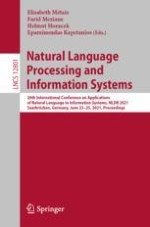2021 | OriginalPaper | Chapter
Virus Causes Flu: Identifying Causality in the Biomedical Domain Using an Ensemble Approach with Target-Specific Semantic Embeddings
Authors : Raksha Sharma, Girish Palshikar
Published in: Natural Language Processing and Information Systems
Publisher: Springer International Publishing
Activate our intelligent search to find suitable subject content or patents.
Select sections of text to find matching patents with Artificial Intelligence. powered by
Select sections of text to find additional relevant content using AI-assisted search. powered by
